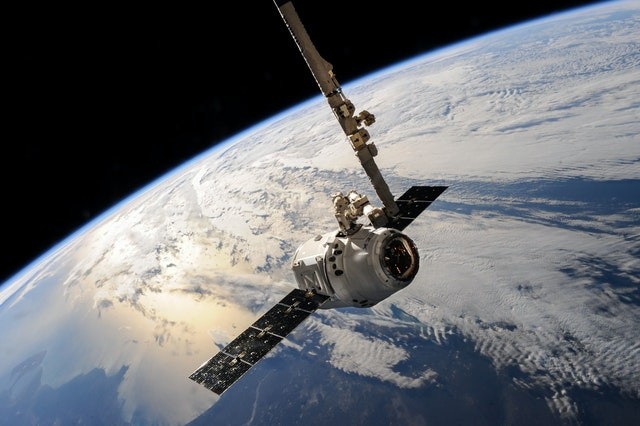As it races against space weather, a satellite avoids space debris. Satellites have more drag and debris due to the sun's increasing flares and eruptions.

Near Direct Collision
An accidental collision with a piece of space junk nearly missed happening to a European spacecraft that has been scurrying to avoid dying prematurely in Earth's atmosphere owing to poor space weather.
The Swarm constellation's satellite that tracks the Earth's magnetic field has been flying to a higher altitude after encountering increased drag due to variations in the upper atmosphere's density brought on by solar activity.
The move, which aimed to increase the satellite's height by 28 miles (45 kilometers) for ten weeks, had to be shelved when mission control received a call from a piece of space debris.
Full on Support
The event, which occurred on June 30, necessitated the ground control crew to instantly execute an avoidance maneuver to escape the piece of debris, according to a European Space Agency (ESA) statement.
In ESA's opinion, the mishap emphasizes the unstable conditions in Earth's orbit. With thousands of pieces large enough to kill a satellite presently known to be flying around the Earth, the problem of space debris has only become worse.
Satellite operators are in for a double whammy as the sun enters a phase of more extreme activity, generating more sunspots, flares, and coronal mass ejections than it has in years.
Condition in Space
Satellites must trudge through the thickening gas as if flying against the wind when the upper atmosphere's density rises. Satellite operators must utilize onboard propulsion to stop the satellites from spiraling back down to Earth.
Hugh Lewis, a professor of engineering and physical sciences at the University of Southampton in the U.K., and other experts predict that these same air density changes will cause a temporary increase in the number of debris fragments in low Earth orbit because these fragments experience the same increased drag as the satellites. In a previous interview with Space.com, one of Europe's top space debris specialists. These pieces, in contrast to the satellites, are uncontrollable.
Future Maneuvers
According to the ESA's Swarm team, the orbit-raising maneuver was ultimately finished, allowing the spacecraft to function safely for the foreseeable future.
Surviving Space Weather
Due to ionosphere instabilities that can reflect, refract, or absorb radio signals, space weather impacts communication between the Earth and satellites. This includes the Global Positioning System (GPS) satellites' radio waves. By generating zones of heightened density, space weather can alter the ionosphere's density structure.
In terms of economic impact, the loss of the infrastructure necessary for power distribution networks large enough to cover a whole continent would result from space weather. Electric currents that formerly flowed through telegraph wires in the 19th century due to the geomagnetic field, interplanetary magnetic field, and solar wind can now enter electric power transmission lines with potentially disastrous results.
Related Article : Experts Warn How Powerful Solar Storms Can Possible Destroy Satellites
For more cosmic news, don't forget to follow Nature World News!
© 2025 NatureWorldNews.com All rights reserved. Do not reproduce without permission.





